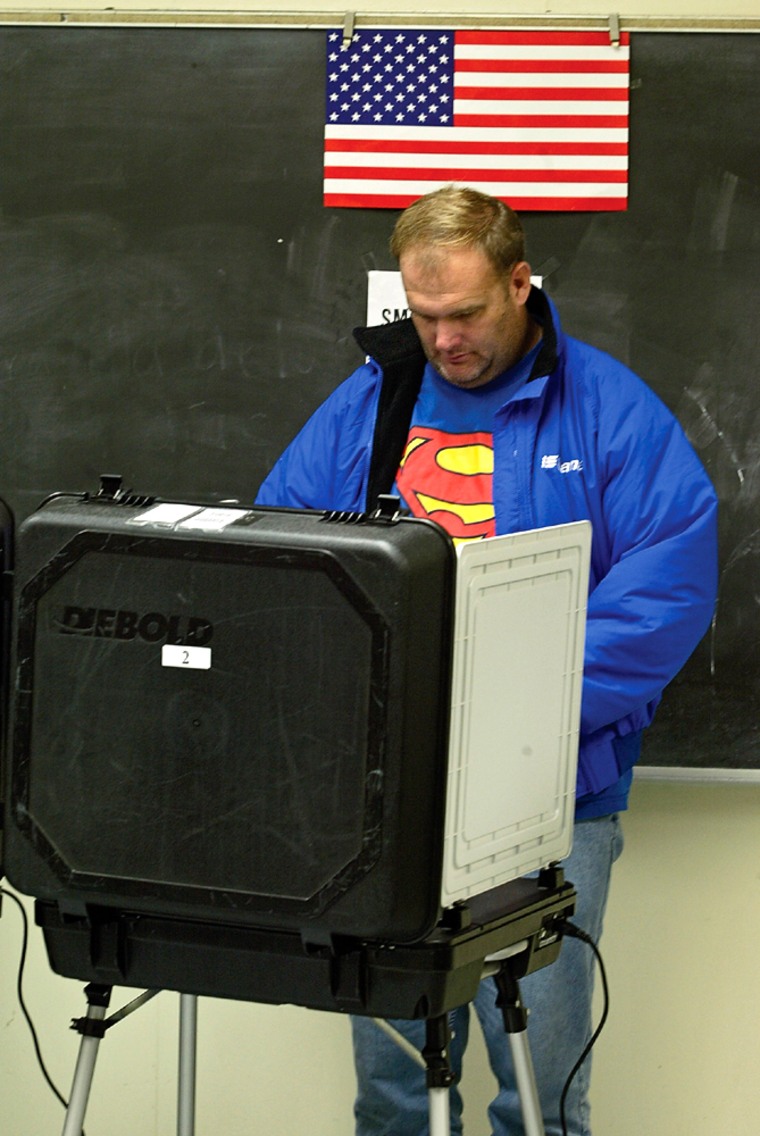The Nov. 2 election could set records for voter turnout — and unfortunately, for voters being turned away as well. How can you make sure your vote will be cast and counted? Here are 10 top tips from the federal Election Assistance Commission, along with extra suggestions and resources from MSNBC. Click on the "Print This Article" button below for a printout.
1. Before you show up to vote, contact your local election official to confirm your name is on the registration list. To find out who to contact, consult our Decision 2004 registration guide. You should be able to find your polling place by checking MyPollingPlace.com, but contact your election official if there's any doubt — for example, if you've moved recently.
2. Each state has different voter identification requirements. You should know what is required in your state before you go to vote. You may be asked to show your driver's license or registration card, particularly if you're a first-time voter. If your driver's license doesn't reflect the residence where you registered, bring alternate ID — even mail bearing the right address.
3. Familiarize yourself with the voting device used in your jurisdiction. MyPollingPlace.com lists the devices used in each precinct, and our Voting Tech guide tells you how to avoid errors.
4. Know what time the polls open and close. Consult our poll-closing guide.
5. Know how and when to apply for absentee ballot if you are not going to be able to get to your polling place on Election Day. Check our Decision 2004 registration guide for state-by-state absentee deadlines.
6. Know your options for early voting.
7. Become acquainted with the candidates and issues on the ballot. You can fill out a sample ballot and bring it with you as a guide to streamline the voting process.
8. Each polling location must post a sign explaining your rights as a voter.
9. If you go to the polls and your name is not on the list, and you believe you are registered to vote in that jurisdiction, ask for a provisional ballot. You should vote in the precinct where you registered, however. If you vote in a different precinct, your provisional ballot may not be counted. Don't be shy about seeking assistance to get to the right precinct.
10. If you feel your rights have been violated, you can file a complaint with your state election officials. Every polling place must be able to provide contact information about where you can file the complaint. You also can contact the non-partisan Voter Alert Line (1-866-MYVOTE1 or 1-866-698-6831) or the Election Assistance Commission (1-866-747-1471).
